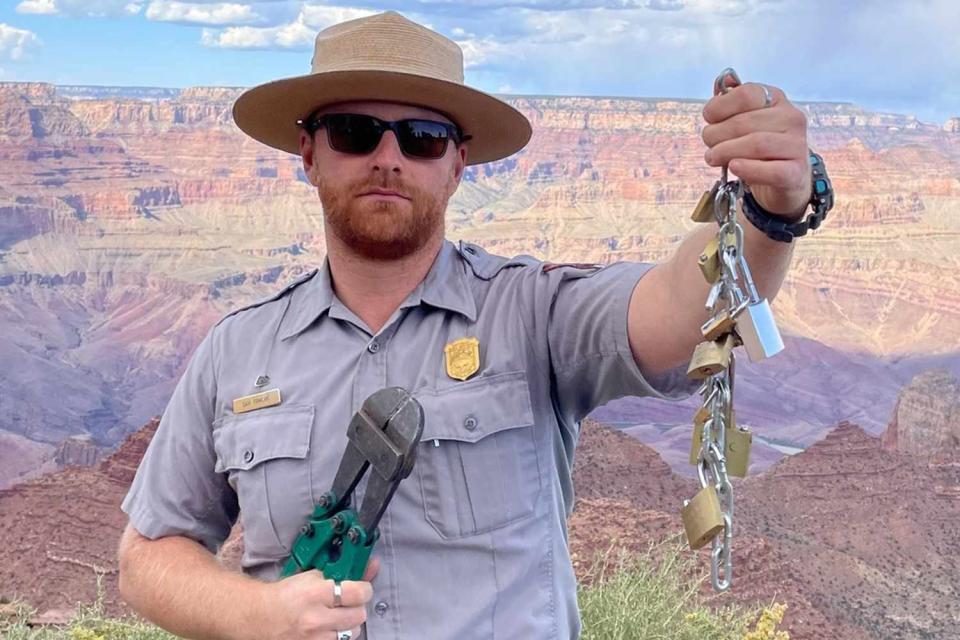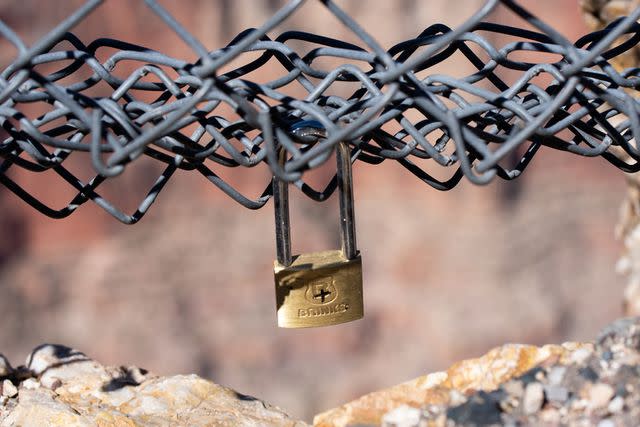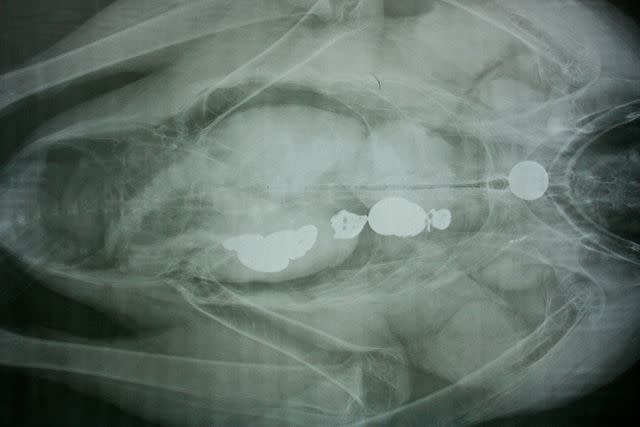Grand Canyon Asks Visitors to Stop Using 'Love Locks' in Order to Protect Wildlife
'Love is strong, but it is not as strong as our bolt cutters,' the Grand Canyon National Park's official Facebook read

NPS Photos / D. Pawlak
A national park ranger photographed holding love locksThe Grand Canyon National Park is urging visitors to symbolize their love in other ways, as leaving "love locks" at the site is endangering wildlife.
"Love is strong, but it is not as strong as our bolt cutters," a post began on the park's official Facebook page. "Padlocks left behind on fencing are called Love Locks. People think putting a lock on fencing at viewpoints is a great way to show love for another person. It's not."
The trend became popular in cities like Paris on the Pont des Arts and New York City's Brooklyn Bridge, with social media posts not helping the matter.

NPS Photos / D. Pawlak
A photograph of a love lock left at Grand Canyon National ParkRelated: TikTok Star Could Be Charged After Video of Her Hitting Golf Ball Into Grand Canyon Goes Viral
CNN noted that the locks in the City of Lights even caused structural damage to the bridge, with the city removing roughly 700,000 of them in 2015, the metal objects equal in weight to about 20 elephants.
"Leaving pad locks like this is littering and a form of graffiti. But because people will throw their padlock key into the canyon the scenario becomes worse and more dangerous specifically for a rare and endangered animal of the canyon," park officials added, noting that animals like condors are curious animals and love shiny things.
"They will spot a coin, a wrapper or a shiny piece of metal, like a key from a padlock that has been tossed into the canyon and eat it. Condors are not meant to digest metal and many times cannot pass these objects."

NPS Photos / D. Pawlak
A photograph of an X-ray of coins lodged in a Condor birdProving its point, the park included an X-ray image on the post with "coins lodged in the digestive tract" of a condor.
"This bird had to be operated on to clear the obstructions. If a condor ingests too many objects like this, it could die."
"Leave only footprints." a commenter wrote.
Related: California Condor Population Rebounding After the Bird Species Nearly Went Extinct
Never miss a story — sign up for PEOPLE's free daily newsletter to stay up-to-date on the best of what PEOPLE has to offer, from celebrity news to compelling human interest stories.
Condors, primarily found in California, Arizona and Utah, have been protected by federal law since 1967, Backpacker.com reported, with their main cause of death determined to be human-related.
The outlet added that crows and other species, like condors, are also attracted to shiny items.
For more People news, make sure to sign up for our newsletter!
Read the original article on People.

